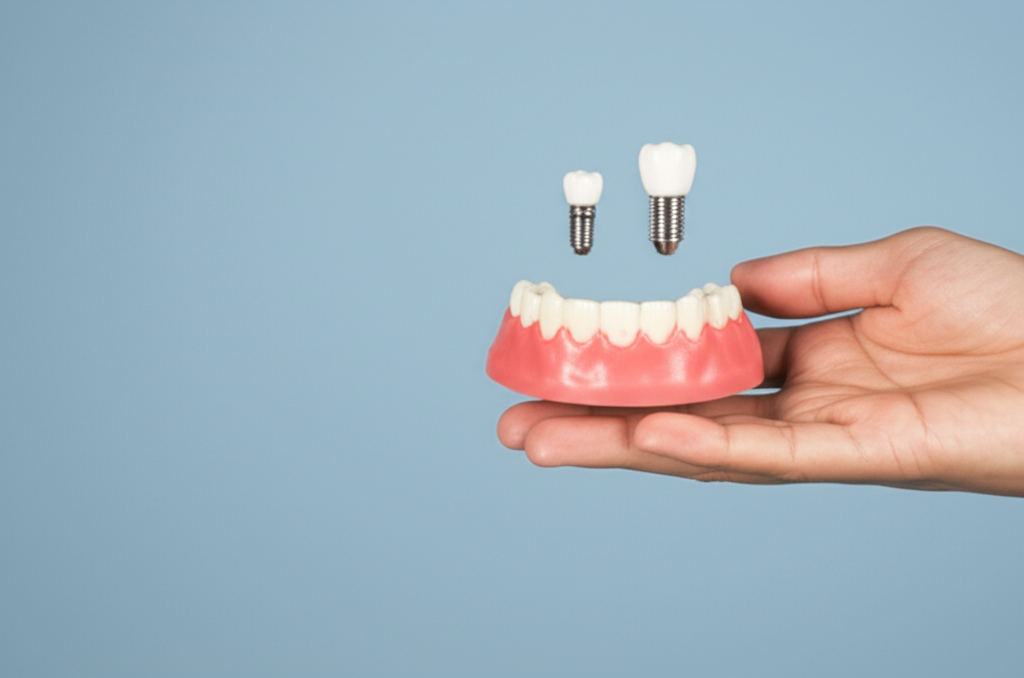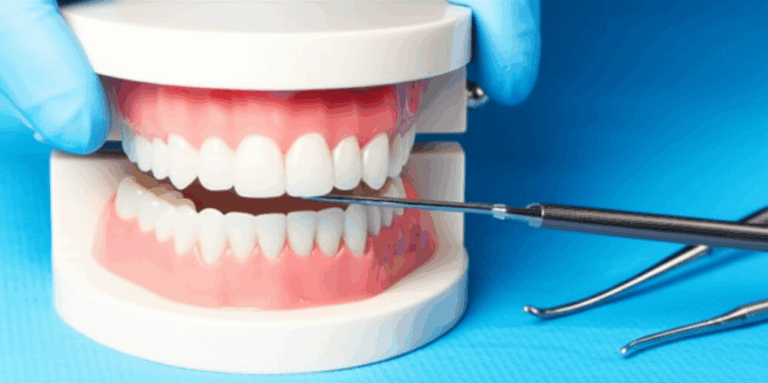
Does CDPHP Cover Dental Implants? Understanding Your CDPHP Dental Benefits
Thinking about getting dental implants and wondering if CDPHP will help pay for them? You’re not alone. Dental implants can change lives, but they also cost a lot. In this article, I’ll walk you through everything you need to know about CDPHP, how their dental coverage works, what’s often covered or not, and how you can get the most benefits possible. You’ll find simple answers, real-world stories, and tips you can use today—so you don’t miss out on the care you need!
Table of Contents
What Is CDPHP and Why Does Dental Coverage Matter?
You’ve probably heard the name CDPHP. It means Capital District Physicians’ Health Plan, a trusted health and dental insurance provider in New York State. Many families and people use CDPHP for their regular health care. But when it comes to something as big—and as pricey—as dental implants, knowing what your plan actually pays for becomes super important.
Dental implants are often more than just about looks. They help you eat, talk, and smile with confidence. Still, they cost a lot. So, having good dental insurance could mean the difference between getting the care you need and having to skip it because it’s too expensive.
Do All CDPHP Plans Cover Dental Implants?
Here’s the big question: Does CDPHP pay for dental implants? The answer is, it depends—because not every dental insurance plan is the same. There are a few kinds of CDPHP plans:
- Commercial Coverage (employer or group plans)
- Medicare Advantage
- Medicaid
- Individual and Family Dental Policies
Some plans include dental benefits, some don’t. Even with a plan that covers dental work, covering implants is usually only partial. It might cover just certain parts, like the implant post or the crown. Work that is only for looks often doesn’t get paid for, so you need to check the details.
For example, if you have a CDPHP dental plan from work, you might get coverage for things like checkups, fillings, and maybe dentures or bridges—but implants are sometimes treated as a “major” service with tighter rules. Learn more about dental implant options.
How Do I Know If My Plan Will Help With Dental Implants?
Let’s say your dentist tells you that you need an implant. Will CDPHP help pay? To answer that, you need to know:
- What type of plan do you have? (PPO? HMO? Group? Individual?)
- Is the implant for health reasons? For example, if you lost a tooth in an accident, you might have a better chance.
- Do you have a waiting period? Some plans make you wait 6 or 12 months before they’ll pay for big dental work.
Each plan has its own rules, so always read the member policy booklet or log in to the member website for details. Remember, not all plans treat implants the same way.
CDPHP Dental Coverage: What Gets Paid, and What Doesn’t?
Let’s break down what dental implant work actually means, and if CDPHP policies might help with each part.
What might get paid for?
- Surgical Placement: This is when the oral surgeon puts the implant post in your jaw (like a tiny screw). In insurance language, this is often called D6010. Sometimes, plans pay for part of this if the dentist says it’s needed for your health.
- Restorative Parts: After the post, you need an abutment (D6058) and then a crown (D6059). These make the implant look and work like a real tooth!
- Extra Steps: You might need things like tooth removal, adding bone, or sinus lifts. If these are needed for your health, you might have some coverage.
What’s usually not paid for?
- Just for Looks: If CDPHP thinks the implant is only for looks, it may not pay.
- Repeat Procedures: If you just had an implant and want another, your plan might have rules about how often you can get them.
- Problems from before you had insurance: CDPHP may not pay for tooth loss that happened before your policy started.
Also, there are limits on how much the plan will pay each year. For example, if your plan only pays up to $1,500 per year, any more than that, you pay yourself.
Here’s a quick chart:
| Dental Procedure | Common Code | Likely CDPHP Coverage? |
|---|---|---|
| Implant Post Placement | D6010 | Sometimes, if needed for health |
| Abutment Placement | D6058 | Maybe part, depends on plan |
| Crown on Implant | D6059 | Maybe part, if plan allows |
| Bone Grafting | D7953 | Rare, unless needed for health |
| Sinus Lift | D7951 | Rare, only in special cases |
| Tooth Removal | D7140 | Often, if part of bigger plan |
| Cosmetic-only Implant | – | Rarely |
The Costs Behind Dental Implants: What Should You Expect?
Dental implants cost a lot. I’ve seen many people surprised by the bill! Here’s what you might expect:
- One implant (post, abutment, crown): $3,000–$6,000, sometimes more.
- Full Row of Implants (All-on-4): Can be more than $20,000 for each row.
But don’t panic! CDPHP might pay for some parts. Here’s what you should know:
- Deductible: This is the amount you pay first, before insurance helps. Could be $50, $100, or more.
- Coinsurance: After the deductible, you usually pay a part of each bill (sometimes 50%), and CDPHP pays the rest—up to a yearly limit.
- Yearly Maximum: Once insurance pays up to their yearly limit (often $1,000–$1,500), anything after that is your job.
For example, if your procedure costs $4,000, CDPHP pays 50%, your deductible is $100, and your yearly max is $1,500, you could still have a lot to pay yourself. You’ll have to plan ahead.
What Steps Do I Take to Check My Implant Coverage With CDPHP?
You want to know for sure what’s paid for—before you start. Here’s what you should do:
1. Read Your Policy Booklet or Benefit Document.
Look in your booklet or log in to the CDPHP website. Look for words like “major services,” “implant,” “prosthetics,” or codes like D6010, D6058, D6059.
2. Try CDPHP’s Online Tools.
The CDPHP site lets you look up benefits, check dentist lists, and see what things might cost.
3. Call Customer Service.
It’s often best to call. Some questions to ask:
- Is dental code D6010 paid for by my plan?
- What is my deductible and yearly limit?
- Is there a waiting time before implants are covered?
- Do I need approval ahead of time for surgery?
4. Ask Your Dentist or Surgeon for Help.
Let your dentist send in a request to CDPHP ahead of time. That’s how you ask, “Will you pay for this?” before anything is started.
If you want to see some cool choices for dental implants, check out this implant dental laboratory to see what your dentist might offer!
Why Do Some Costs Come Out of My Own Pocket?
Here’s the problem: Even good plans may not pay for every part. There are deductibles, coinsurance, and the yearly limit.
Let’s say your plan’s limit is $1,500, and your work costs $4,000—you pay the extra $2,500 yourself.
Sometimes, you’ll also pay more for:
- Pain medicine
- Follow up visits
- Keeping the implant clean and working
What can you do? Ask if your dentist has payment plans or ways to pay over time. Some offices work with companies who help you pay monthly instead of all at once.
If you want to compare what other choices could cost, you might want to check with a crown and bridge lab—they can tell you about different options that might work with your plan.
Are There Alternatives to Implants That CDPHP Helps Pay For?
Not everyone needs an implant, and sometimes, insurance just doesn’t help enough. Good news, there are other choices, and CDPHP usually covers these more:
- Dental Bridges: Bridges fill gaps using your other teeth for support. They don’t cost as much as implants and are often paid for.
- Partial or Full Dentures: Removable, maybe not as natural-looking as implants, but insurance often pays more of the cost.
- Other Repairs: Crowns, fillings—most plans help pay after your deductible.
Are implants worth it? For some people, yes. But if you can’t make it work with your coverage, a bridge or a denture might be a better choice. Take a look at what a removable denture lab can offer to see your options.
Can My Dentist or Surgeon Help Me With Insurance?
Yes! Your dentist or oral surgeon deals with insurance every day. They know what codes to use, how to explain why you need the work, and how to file claims.
- Requests ahead of time are very helpful. They show how much you’ll pay before anything happens.
- Get it in writing. Always ask for a benefits statement (“EOB”) from CDPHP before big dental work. This helps you avoid surprises.
- Appeals: If CDPHP says “no,” sometimes your dentist can give more details or ask again. Sometimes this works, especially if you lost a tooth from an accident or illness.
Often, dental offices work with good labs. Want to know more about how your tooth is made? Visit a digital dental lab and see the cool tech behind your smile!
Quick Questions and Answers (FAQ)
Q: How do I find out exactly what my CDPHP plan pays for when it comes to implants?
A: Log in to your CDPHP website, read your dental booklet, or call Customer Service. Each plan is different.
Q: Does CDPHP pay for bone grafts or sinus lifts?
A: Sometimes, if needed for your health. Ask your doctor or check your plan.
Q: Will CDPHP pay the whole bill for an implant?
A: Almost never. You’ll usually have to pay a part, especially over the plan’s limit.
Q: Can I pay monthly for what insurance won’t cover?
A: Many dental offices help with payment plans. Ask about your choices.
Q: Does dental insurance from CDPHP pay only for looks?
A: Usually no. If it’s just to look better, not for your health, CDPHP probably won’t pay.
Main Points to Remember
- Check your own CDPHP plan to see if it pays for implants. Don’t guess—ask and read.
- Coverage is hardly ever 100%. Plans usually pay part of the bill, up to the yearly limit.
- Options like bridges and dentures may be paid for more than implants.
- Always get a cost check first.
- Ask your dentist or surgeon for help with insurance.
- Think about all costs—deductible, coinsurance, waiting times, and yearly limits.
- Use the tools you have: Online info, customer service, your policy book.
- Try an appeal if you really need the implant for your health.
- Look at other ways to pay or different options if your part of the bill is too high.
Having a healthy smile can really change your life—but so can big dental bills. With CDPHP, being informed helps, and spending a little time checking things out now can save a lot of stress later. Good luck on your journey to a happy, confident smile!








